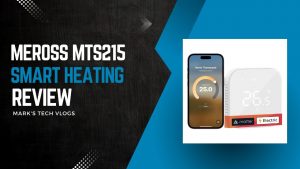Headline verdict: I do not recommend purchasing the Neakasa M1 Automatic Litter Box at this time, primarily due to safety concerns discussed below.
Why This Update Exists
This article follows up on my original review of the Neakasa M1 Automatic Litter Box. That initial review covers features and routine maintenance; this piece focuses on one year of real-world use—what’s worked, what hasn’t, and whether I would still recommend it.
Safety: The Deciding Factor
A few months ago, safety concerns circulated among owners, including one verified incident where a cat was injured (the cat recovered after veterinary care) and one unverified claim of a fatality which, despite outreach attempts, could not be substantiated and appears likely to be false.
One known risk involved the entry mat magnets loosening, allowing the unit to overturn at the end of a cycle. Neakasa M1 Automatic Litter Box responded with a firmware update and began developing a revised cog to make this failure mode mechanically impossible. Owners were advised they could request the new cog from support when available.
More recently, two further incidents were reported: one where a cat was injured when the unit did not stop mid-cycle, and a tragic, verified fatality shared in the official community. The owner reports that Neakasa’s team attributed the fatality to multiple faults occurring together; a subsequent firmware update was released to address this.
Regardless, one confirmed death is one too many. Until all retail units include the revised cog and (ideally) improved sensing, I cannot recommend buying the Neakasa M1 Automatic Litter Box.
My current mitigation while still using the unit includes increasing the gap between usage and auto-cycle, placing a camera above the unit to monitor activity, and connecting it to a smart plug so power can be cut instantly if needed.
Daily Use After 12 Months
- App & weight logging: With two similar-weight cats, weight attribution isn’t always accurate—understandable—but notifications (uses, full bin, issues) can also be unreliable at times.
- Litter compatibility: I’ve used two clumping bentonite litters. Dust levels varied; the current choice is far less dusty and aligns with Neakasa’s recommendation for clumping bentonite.
- Cleanliness: Even with a 10-minute delay before cycling, the back of the unit can get messy over time. On a few occasions, a particularly large wee missed the waste port.
- Overall function: When it works, it works well—around 97% of the time—significantly reducing manual scooping.
- Waste capacity: With two cats, the waste drawer typically lasts about eight days and is straightforward to empty.
Maintenance Routine
- Light cleans: Wipe down the body as needed with a mild spray and kitchen roll, allowing it to dry before use. I usually do this in the daytime when our cats rarely visit.
- Quarterly deep clean: Roughly every three months I empty the litter, remove the drum, and wash it thoroughly, letting it dry (faster in summer, fine in winter). If the litter is still clean enough, I tip it into a fresh bag in the waste drawer to reuse later.
- Main unit care: I vacuum the trap door area first, then wipe down carefully—avoiding wetting the internal mechanical zones.
- Overall: The Neakasa M1 Automatic Litter Box is generally easy to clean once you know the routine.
Reliability & Warranty Experience
The Neakasa M1 Automatic Litter Box ships with a one-year warranty. I needed it.
- Updated mat: Neakasa released a higher-edged mat to help with side-peeing cats. They sent it free; installation was simple and better than the original silicone stickers.
- Sensor issue: Just before my warranty expired, the “empty” indicator flashed red persistently. The trap door was stuck open. After cleaning the infrared sensors and checking for obstructions, support concluded the sensors had failed. Replacement sensors arrived from Germany within a week; I fitted them myself and it resolved the fault. It seems to be a relatively common failure, and the replacements included extra protective glue—suggesting Neakasa is trying to improve longevity.
Considering Alternatives
I’m evaluating replacements in the near future—potentially the Popur S7—especially since one of our cats prefers open-top designs.
Final Verdict: Would I Buy It Again?
Although my day-to-day experience with the Neakasa M1 Automatic Litter Box has often been positive, I cannot in good conscience recommend a device associated with a verified fatal incident. Preventing entrapment and ensuring robust fail-safes must be the top priority for any automated litter solution.
- Mess control: Occasional splash/“wee fling” is still unresolved and undesirable.
- Longevity questions: Sensor failure within a year—and the need for improved parts—raises durability concerns outside warranty.
If you’re still considering the Neakasa M1 Automatic Litter Box, you can insert your purchase link here: Neakasa M1 Automatic Litter Box.
Have you owned the Neakasa M1 Automatic Litter Box? Share your experience and any tips for safer setup in the comments on Mark’s Tech Blogs.






